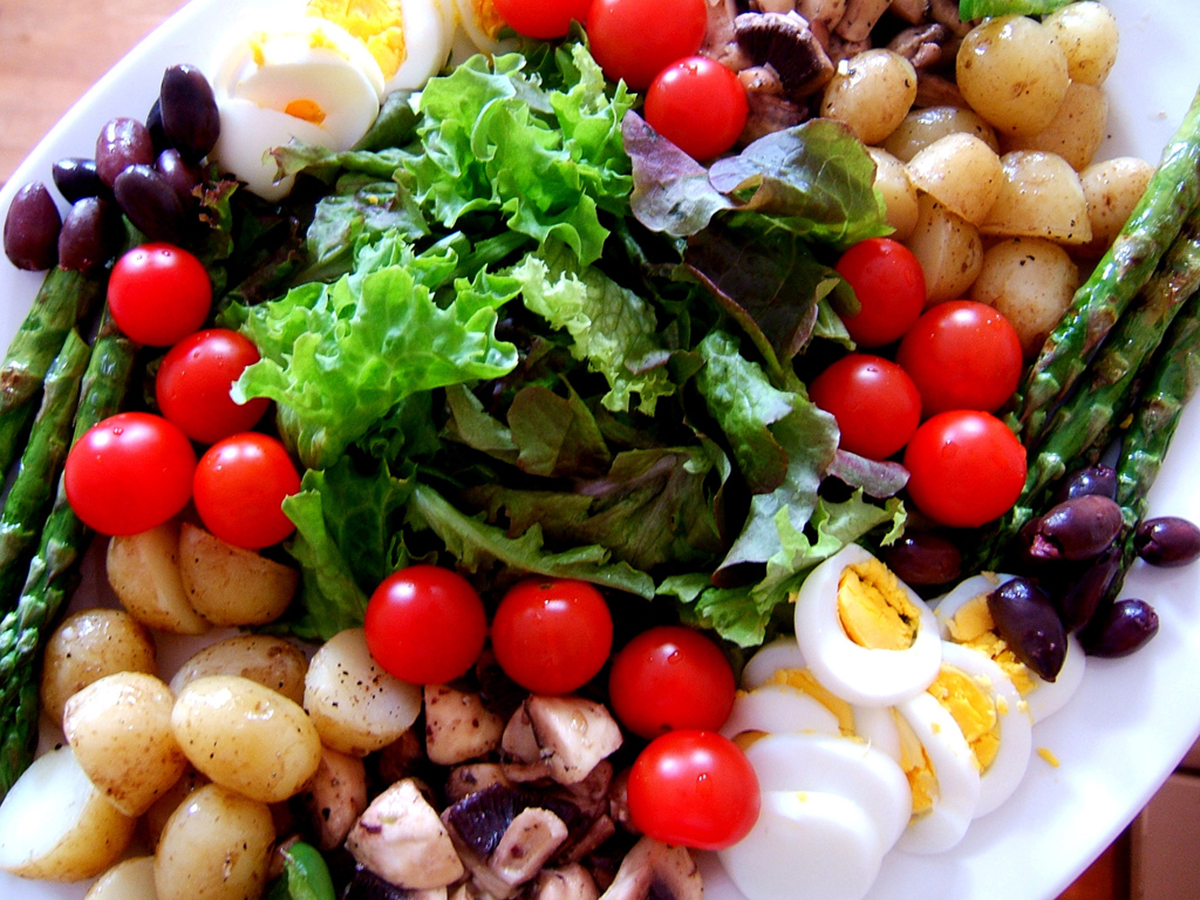Table of Contents
Research studies indicate that an increase in the portion size of energy-dense food significantly contributes to weight gain. These two parameters affect weight gain independently, but together their effect is quite profound.

A number of research studies suggested that taking larger portions of foods that have a low energy density and smaller portions of energy-dense food will be satisfying for individuals trying to lose weight and it will not cause the problems associated with hunger. It also encourages individuals to adhere to the plan and maintain weight loss.
Foods Low On Energy Density, But Larger Portion Sizes?
Water- and fiber-rich foods like vegetables and fruits provide low energy while satisfying hunger. One strategy can be consuming higher amounts of these types of foods. Another way of limiting high energy density food is by reducing the high-fat food components. However, fats cannot and do not need to be eliminated completely. The whole point of a balance between energy density and portion size, well, a balance between the two. Fat-rich food provides much more energy than even carbohydrates and proteins. Consuming smaller portions of energy-dense food will lead to a lack of satiety and hunger.
Effects Of Balancing Energy Density And Portion Size
Research studies conducted on test and control groups have revealed that if larger portions of low energy density food are consumed before the main course meals, that leads to a lower overall energy intake. The test group ate its main high-energy meals after consuming a portion of salad first. The results demonstrated that the test group consumed smaller portions of foods with a higher energy density.
Another group of researchers conducted a study in 2005 relating the portion size and the energy density of food. Results indicated that the larger portions of the less energy dense foods led to higher success rate in losing weight along with higher satisfaction levels in comparison to the eating smaller portions of low energy food.
See Also: Paleolithic Diet: Were Our Ancestors Healthier?
It appears that most dieting approaches rely on the self-discipline of a dieter. This, however, is problematic – feeling underfed for many months in a row is not something most people would be happy to go along with. Manipulating the portion size and energy density of food, if done properly, has the clear advantage of eliminating or reducing the dissatisfaction caused by the lack of satiety. It can reduce the amount of calories consumed, which eventually helps in reducing the weight and sustaining it at lower level in the long terms. This approach is certainly worth considering by any person who is serious about his or her weight loss.
- ELLO-MARTIN, J. A., LEDIKWE, J. H. & ROLLS, B. J. (2005 ) The influence of food portion size and energy density on energy intake: implications for weight management. American Society for Clinical Nutrition, 82, 236S-241S
- ELLO-MARTIN, J. A., ROE, L. S., LEDIKWE, J. H., BEACH, A. M. & ROLLS, B. J. (2007) Dietary energy density in the treatment of obesity: a year-long trial comparing 2 weight-loss diets. American Society for Clinical Nutrition, 85, 1465-1477
- FREEDMAN, M. R., KING, J. & KENNEDY, E. (2001) Special Issue: Popular Diets: A Scientific Review. Obesity Research, 9, 1S-5S
- GALUSKA, D. A., WILL, J. C., SERDULA, M. K. & FORD, E. S. (1999) Are health care professionals advising obese patients to lose weight? JAMA, 282, 1576-1578
- KRAL, T. V., ROE, L. S. A. & ROLLS, B. J. (2004) Combined effects of energy density and portion size on energy intake in women. American Society for Clinical Nutrition, 79, 962-968
- LEDIKWE, J. H., BLANCK, H. M., KHAN, L. K., SERDULA, M. K., SEYMOUR, J. D., TOHILL, B. C. & ROLLS, B. J. (2006) Dietary energy density is associated with energy intake and weight status in US adults. American Society for Clinical Nutrition, 83, 1362-1368
- ROLLS, B. J., ROE, L. S. & MEENGS, J. S. (2004) Salad and satiety: Energy density and portion size of a first-course salad affect energy intake at lunch. Journal of the American Dietetic Association, 104, 1570-1576
- WING , R. R. & PHELAN, S. (2005 ) Long-term weight loss maintenance. American Society for Clinical Nutrition, 82 222S-225S.Photo courtesy of Avrene via Flickr: www.flickr.com/photos/enerva/10132360493
- Photo courtesy of WordRidden via Flickr: www.flickr.com/photos/wordridden/173689495


Your thoughts on this